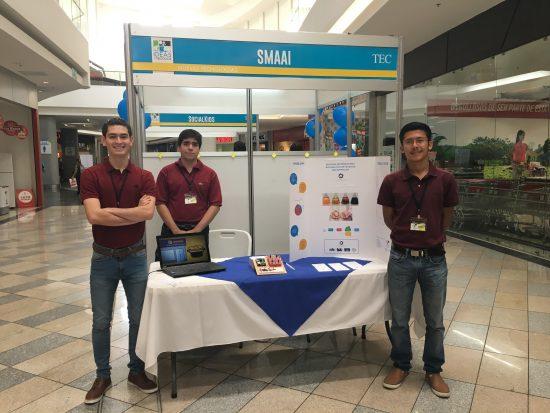How the Network Can Protect Earth’s Natural Cycles
by Kathy Mulvany, VP Corporate Affairs
Cisco Blog | Corporate Social Responsibility
This post originally appeared on GreenBiz.
There is no denying that our modern lives are taking a toll on all of the earth’s natural cycles, whether carbon, resource, or biological. When we look at the carbon cycle, global greenhouse gas (GHG) emissions have grown by nearly 80% since 1970, and atmospheric concentrations of the major greenhouse gases are at their highest level in 800,000 years.
The resource cycle is also being hit hard. For example, the demand for rare earth minerals continues to climb, potentially sapping finite resource supplies. And within the biological cycle, the critical biodiversity we depend on is declining; the World Wildlife Foundation’s (WWF) Living Planet Index 2016 showed a 58% decline across thousands of animal species.
At the same time, through our transition to a knowledge-based economy, technology is transforming our potential to positively impact our communities and our planet. It is estimated that 84% of existing Internet of Things (IoT) deployments can address the UN Sustainable Development Goals, our world’s blueprint for a sustainable future.
Additionally, according to the Ellen MacArthur Foundation and the World Economic Forum’s recent Intelligent Assets report, IoT can help facilitate a more circular economy. Smart devices can help users optimize material use, maximizing the amount that can be reused in the manufacturing of other products. Products can be tracked throughout their lifecycles to enable better servicing and end-of-life decision-making.
From IoT-enabled energy management, to remote collaboration-aided meetings, to digital security solutions that protect endangered species, networking technology is opening doors to innovation that allow businesses to grow in more sustainable ways.
The carbon cycle: Improving energy efficiency and GHG reductions
IoT allows business decision-makers to use real-time data to improve logistics and operational efficiency. This technology can turn off unused devices, driving more efficient and more intelligent operations.
Cisco’s Partner Energy Management program challenges our contract manufacturing sites to pursue verifiable energy savings targets through the digitization of factory activities, such as IoT-based energy management systems. As part of this program, last year, Cisco and Flextronics launched a pilot program in Penang, Malaysia.
The cloud-based energy management software and analytics solution provide continuous data monitoring, enabling automatic energy optimization and intelligent device control and management policies. By shifting factory equipment from “always on” to “available when needed,” managers reduced plant downtime and increased equipment lifespan, ultimately reducing energy use and GHG emissions.
In addition to Cisco’s efforts to reduce impacts along its value chain, Cisco’s products and services, in turn, help our customers optimize their efficiencies. As data centers are a huge source of energy use across the globe, this level of efficiency is making a significant dent in reducing energy use and GHGs.
Cisco products are leading in energy efficiency, incorporating a minimum 80% efficient power supply through our Design for Environment approach. Additionally, Cisco TelePresence®, WebEx®, WebEx Teams®, and Jabber® solutions enable remote, online meetings and collaboration that substitutes for business air travel, reducing GHG emissions.
Employees can meet virtually with each other, as well as with customers and partners around the world without the productivity loss, work-life impact, or GHG emissions of physical travel. Cisco’s collaboration technology solutions have helped to enable the optimization and transformation of the company’s physical workplaces, which from 2012-2017 resulted in 61.5K tCO2e saved and $13M annual savings.
More employees now work from home and, when in the office, they work in flexible workspaces, both factors reducing the total amount of office space needed to support our global business.
The resource cycle: Leveraging IoT for a circular economy
The circular economy is a system in which waste is repurposed and products are designed for reuse at the end of their lifecycle. The network is the platform for the connectivity, technologies, and applications that enable key components of a circular economy (monitoring, data collection, analytics, and decision making).
Furthermore, IoT objects have chips and sensors that track the objects throughout their lifecycles. This helps designers and manufacturers pinpoint when certain components can be taken out of the waste stream and reused or repurposed.
Cisco is applying IoT and cloud-based data management solutions to facilitate a broader use of asset tracking, monitoring, and utilization practices. This leads to more efficient operations, benefitting business and the planet.
For example, at ABB Robotics, Cisco Jasper’s® IoT platform provides real-time network intelligence that allows ABB to do preventative maintenance on its customers’ robots, while also ensuring the company can act immediately when problems occur. On average, ABB customers have seen an increase of 11% in manufacturing productivity, 8% reduction in cycle time, 24% increase in available floor space, 28% reduction in labor costs, and 22% reduction in maintenance expenses.
Additionally, ODA Systems, created by students at Instituto Technológico de Costa Rica and recipients of Cisco’s inaugural Global Problem Solver Challenge People’s Choice Award, developed a service that leverages networking technology to efficiently measure lubricant oil quality in machines. The solution decreases pollution and economic waste while boosting productivity.
The biological cycle: Protecting the world’s oldest animals with the world’s leading-edge connectivity technology
The network and its enablement of IoT solutions allows numerous devices — ranging from computers to smartphones to enterprise technology — to communicate with one another more effectively and share information and resources.
Cisco’s Connected Conservation program leverages networking technology to track human movement in and around game reserves, detecting suspicious activity before harm can occur. The program, being piloted at a popular southern Africa game reserve, has helped reduce poaching by 96 percent since 2015. The reliable network operates 24 hours a day, seven days a week across the entire game reserve, supporting the existing preservation goals and operations.
A responsibility and an opportunity
The disruptions of the earth’s carbon, resource, and biological cycles impacts people, society, the planet, and in turn, our global economy. As a worldwide technology leader, we have a responsibility and an opportunity to think beyond our traditional business boundaries and drive value in a way that is sustainable in the long-term.
As stated by Cisco’s CEO Chuck Robbins in our 2017 Corporate Social Responsibility Report, “The future is ours to build, and we have the capability to shape it responsibly.”



